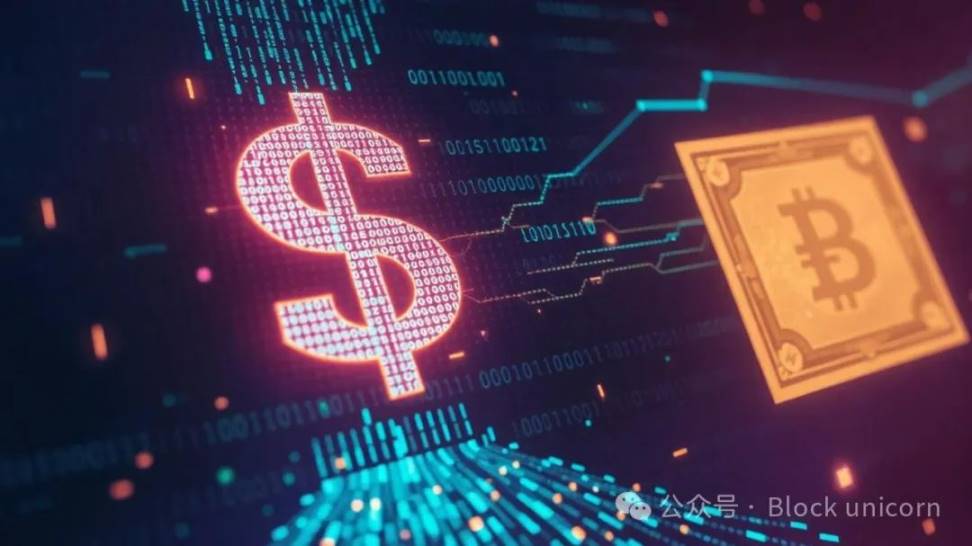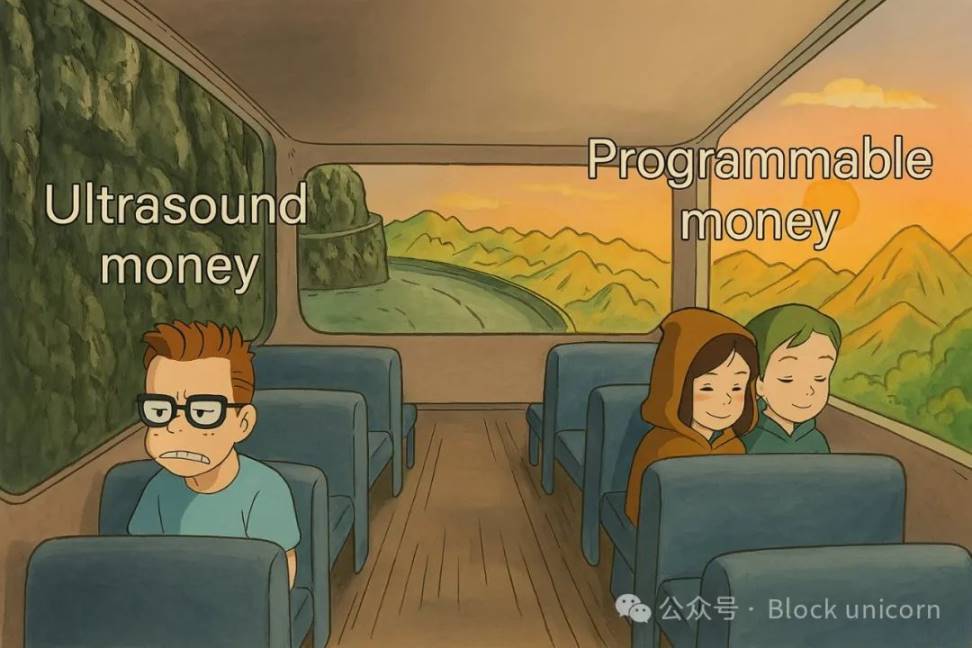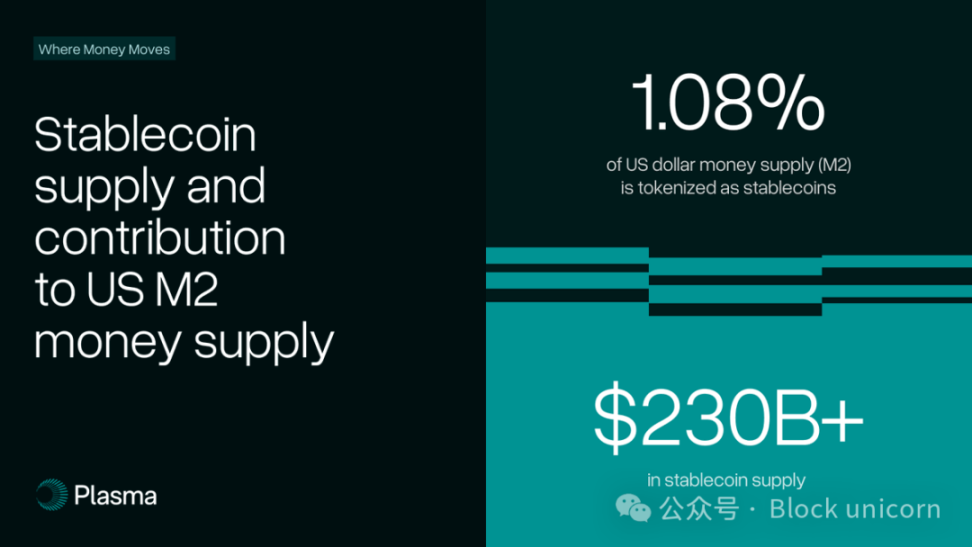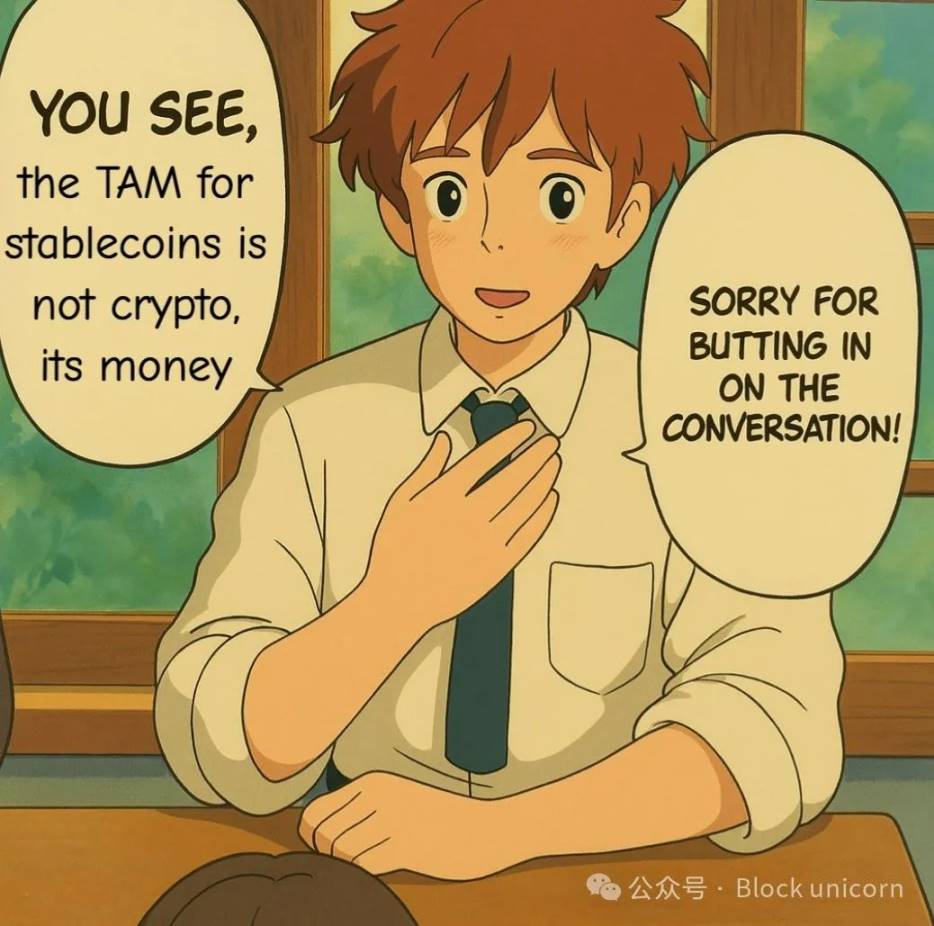Programmability is an inherent attribute of the digital age. Without true programmability, cash cannot fully transition into the digital realm.
Article Author: Nathan
Article Compiled by: Block unicorn

As the influence and recognition of stablecoins continue to rise, people often discuss their advantages, including efficiency, low cost, accessibility, decentralization, and programmability.
Most of these advantages are easy to understand, but there is one exception: programmable money.
Programmable money is an abstract concept, making it difficult for many to form a concrete understanding of it and grasp its true significance.
The importance of programmable money lies in its being the only way to provide critical financial services to billions of unbanked individuals. Programmable money is the only way to change the economics of these financial services, allowing developers and fintech companies to innovate in areas that traditional financial systems cannot reach.
This article will explore some specific examples of programmable money implementations and explain why it represents a significant breakthrough in the way global currency flows.
From Ultrasonic Money to Programmable Money
Recently, I posted the following content on Twitter, and I would like to explain it:

Working in the crypto space should make us all aware of the powerful influence of memes. Whether a meme is real and meaningful or false and hollow, it can spread a concept within a group and play an important role.
The last dominant meme about money was Ethereum's "ultrasonic money" as a guiding star concept.
For those who do not remember this concept, to put it succinctly, Ethereum's ultrasonic money is an evolved form of "sound money" that utilizes scarcity and incentive mechanisms to ensure that ETH can maintain its value as a currency over the long term and resist supply inflation. The term "ultrasonic" represents a modernized framework for reliable wealth storage, around which many members of the Ethereum community have united in the continuous pursuit of this monetary policy.
However, the promise of ultrasonic money ultimately fell far short of expectations, leading to a decline in its credibility.
Nevertheless, using memes to describe a new form of currency still holds powerful influence. The next meme representing currency innovation is programmable money.

The beauty of programmable money lies in the fact that its total addressable market (TAM) far exceeds that of ultrasonic money. This TAM is currency, not some form of cryptocurrency.
TAM is currency, not cryptocurrency

I am serious. Their goal is to take over currency.
The number of currencies is vast and varied. I will directly quote Bridget's recent brilliant content on new mental models for stablecoins.
Real Dollars and the Federal Reserve
Real dollars are an entry in the Federal Reserve's ledger. Currently, about 4,500 entities (banks, credit unions, certain government entities, etc.) obtain these "real dollars" through the Federal Reserve's master account. None of these entities are native cryptocurrency-related, unless you count Lead Bank and Column Bank, which serve specific crypto clients like Bridge. Entities with master accounts can access Fedwire, a super low-cost and nearly instantaneous payment network that allows wire transfers 23 hours a day and essentially achieves instant settlement. Real dollars exist in M0: the total of all balances on the Federal Reserve's master ledger. "Fake" dollars (created by private banks through loans) belong to M1, which is about six times the size of M0.
Block unicorn, WeChat Official Account: Block unicorn rethinking ownership, stablecoins, and asset tokenization
Here, Bridget mentions the significance of the M0 and M1 currency categories. The only important category related to stablecoins is the M2 supply. The M2 supply includes cash, bank deposits, and other easily convertible liquid deposits, serving as a key metric for measuring stablecoins. The difference between M1 and M2 is that M1 is a narrower category that includes only cash and bank deposits, while M2 adds savings accounts and other near-cash liquid assets.
Currently, stablecoins account for over 1.08% of the dollar M2 supply.

Once again, the variety of currencies is vast; and Bridget is only referring to the dollar. There are many other currencies. It is estimated that global liquidity, or global M2, exceeds $90 trillion.
To reiterate, the TAM for currency is enormous. And the goal of stablecoins is to take over this market.

Programmable Money
The new meme targeting the largest possible market is programmable money.
Programmable money allows complex rules to be hard-coded into the currency. While money serves as a means of storing value, another key utility is its mobility. Stablecoins are redefining the way money moves due to their programmability.
Stablecoins are digital cash, primarily tokenized versions of the dollar. Their programmability means that software can dictate the conditions under which these assets are transferred between wallets. Like programs or smart contracts, these rules and parameters regarding how money moves operate autonomously.
Allowing financial transactions to be automatically executed and managed based on preset rules significantly enhances the efficiency of payments, settlements, and compliance. Programmability represents a major upgrade and breakthrough for the financial system, enabling cash to finally achieve digitization.
Globally, the impact of programmability is profound, especially in developing regions where stablecoins can meet critical needs for remittances, microfinance, and everyday transactions. With the programmability of stablecoins, people in these regions can access these services, achieving true financial inclusion.
Examples of Programmability
To simplify the abstract concept of programmable money, here are a few practical use cases.
Remittances
Imagine a system where smart contracts automatically convert the sender's local currency into stablecoins and transfer them to the recipient's wallet abroad. The smart contract triggers when conditions are met, releasing stablecoins and converting them into fiat currency before transferring the funds. This eliminates intermediaries, reduces costs, and provides near-instant cross-border transactions.
Embedding parameters such as payment confirmation or a certain amount threshold highlights the application of programmability.
Global Payroll System
Consider a payroll solution that uses stablecoins to pay global employees. For example, imagine you live in a developing country and work remotely for a U.S. company, but you do not have a U.S. bank account, and the company does not use stablecoins. Through a programmable payroll system, you can invoice the company in fiat currency, and the system will automatically convert it into stablecoins and send it to your wallet.
Similar solutions also include releasing stablecoin payments to multiple wallets at scheduled intervals. Only when the payment is completed will the stablecoins be converted into the recipient's currency.
Microfinance Solutions
In many developing regions, small business owners struggle to obtain bank loans. Decentralized lending platforms enable these individuals to use stablecoins as collateral for microloans, with smart contracts managing the collateral, disbursement, and repayment schedules. Through the programmability of money movement rules, barriers to accessing such services are eliminated.
Supply Chain Financing
Supply chains encompass the entire process of products from raw materials to end consumers, including procurement, manufacturing, and distribution. Programmability brings significant breakthroughs, as smart contracts and blockchain can record information and automatically allocate stablecoins or cash based on the progress of the supply chain.
For example, in the agricultural supply chain, many farmers supply produce to local cooperatives. Due to delays, poor communication, and over-reliance on traditional financial channels, farmers may take days to weeks to receive payment. However, by using sensors and trusted verification to track shipments, once the produce is confirmed to have arrived at its destination, the smart contract can immediately release stablecoin payments to the farmers.
Digital Breakthrough
Programmability is the core catalyst for innovation, allowing for iterative improvements and valuable lessons learned from experimentation.
Currently, cash is essentially outdated, and even its digital version is limited in programmability. Although fintech and open banking have driven the development of these systems, they remain constrained by the inherent limitations of traditional cash.
Programmability is an inherent attribute of the digital age. Without true programmability, cash cannot fully transition into the digital realm. Therefore, stablecoins are now reaching escape velocity, and we are entering the first digital age of currency.
Thanks to programmability.
In conclusion, forget ultrasonic money; programmable money has arrived.
免责声明:本文章仅代表作者个人观点,不代表本平台的立场和观点。本文章仅供信息分享,不构成对任何人的任何投资建议。用户与作者之间的任何争议,与本平台无关。如网页中刊载的文章或图片涉及侵权,请提供相关的权利证明和身份证明发送邮件到support@aicoin.com,本平台相关工作人员将会进行核查。




